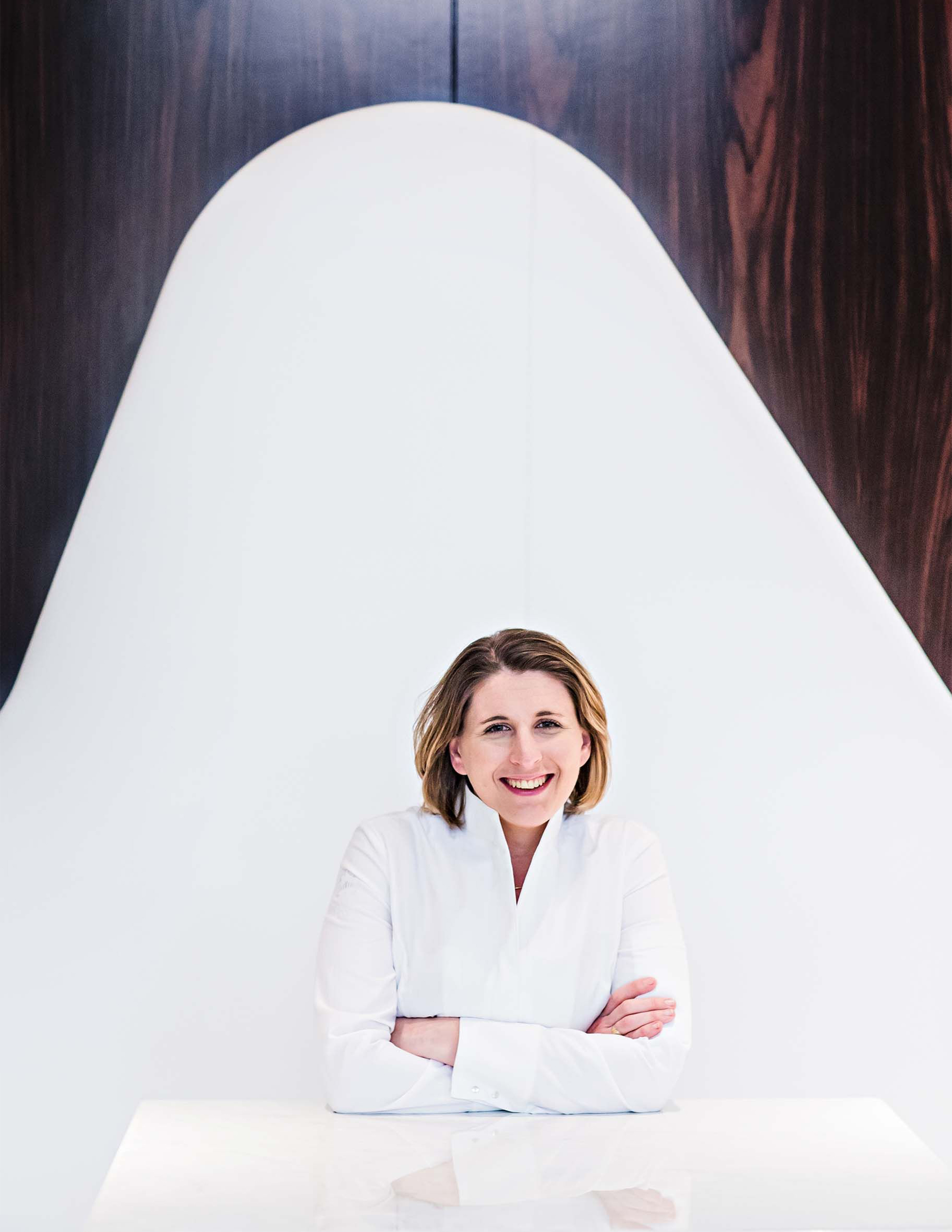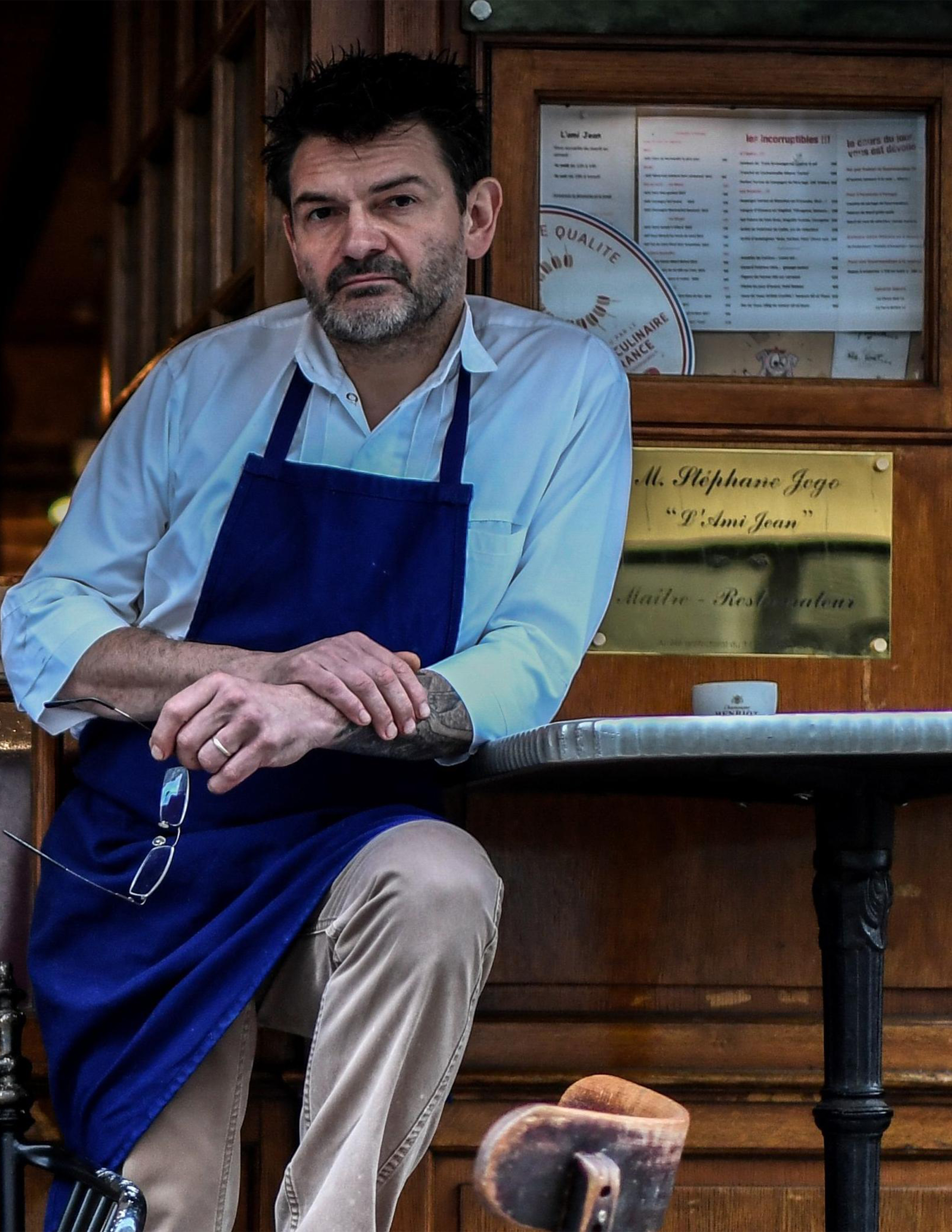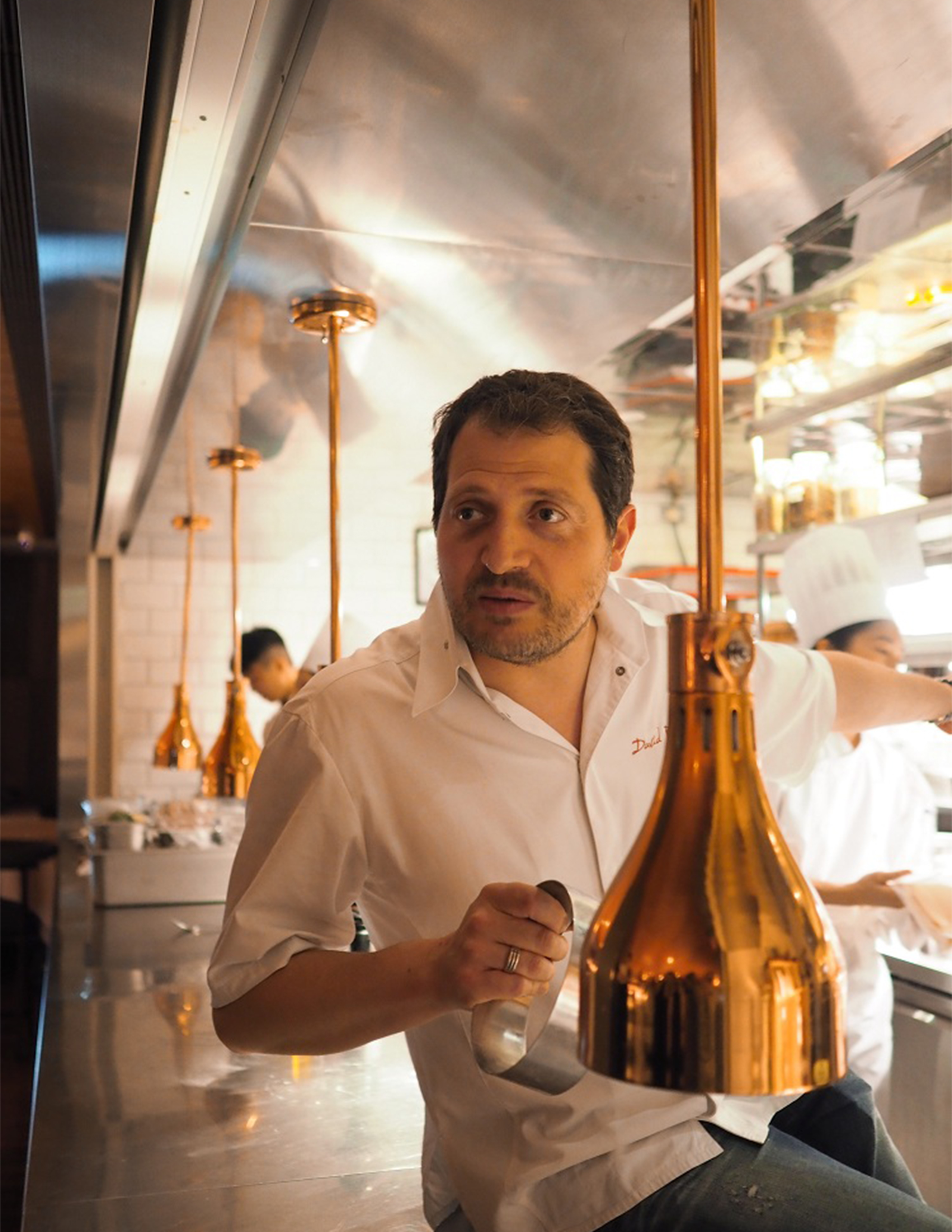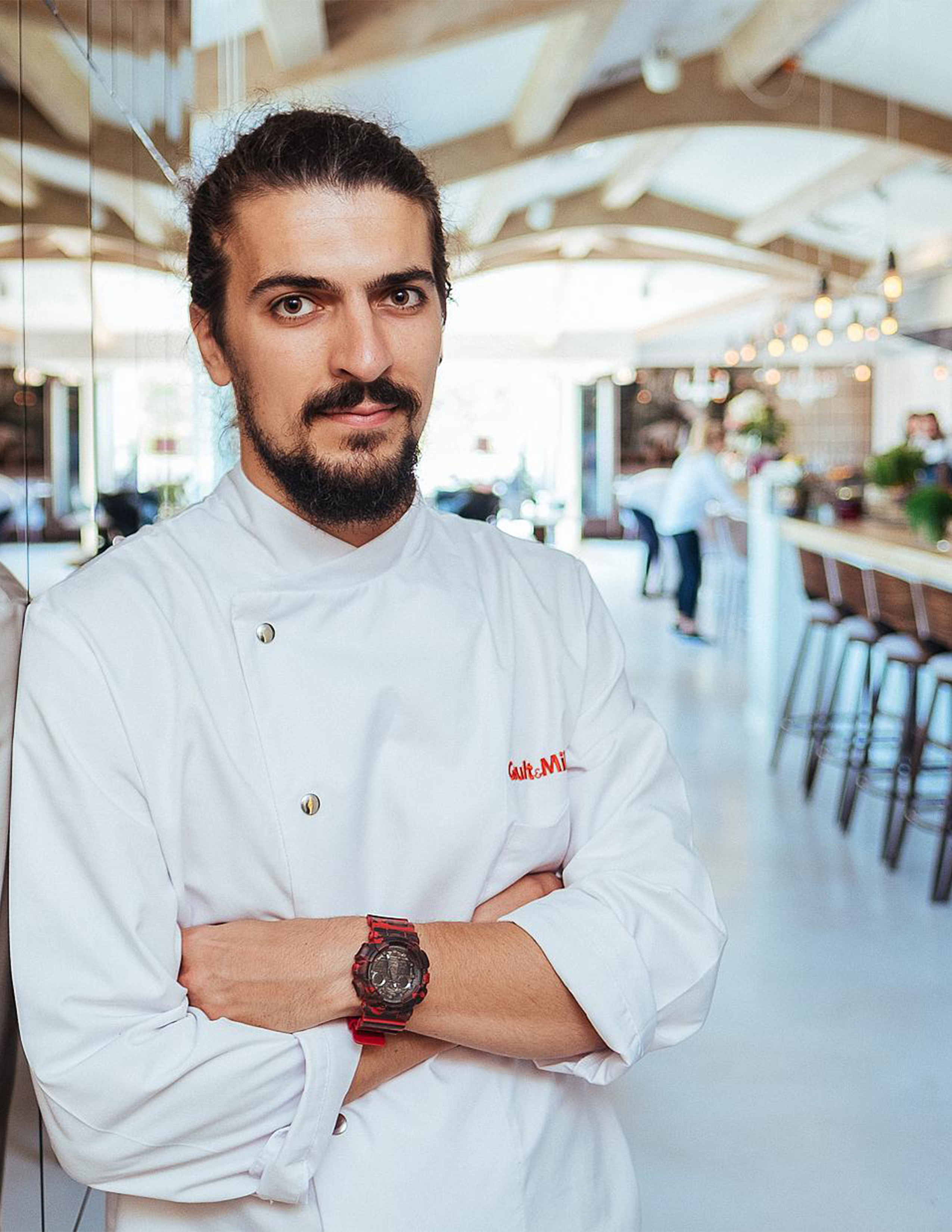Over the last 10 years, Paris has boldly reclaimed its title as the best food city in Europe. The French capital is bustling with a brilliant constellation of new restaurants by talented young chefs from all over the world, plus an inventive and diverse array of casual dining options. There's also been a renaissance of its long-established gastronomic landscape, including traditional bistros, brasseries, and stylish restaurants serving classic French cooking made famous by Escoffier, including dishes like blanquette de veau (veal in cream sauce) and pistachio soufflés.

The bulk of Paris’s famed haute cuisine is fiscally out of reach for many. However Michelin-starred Comice, headed by Canadian chef Noam Gedalof and sommelier Etheliya Hananova (the two are married), is an indulgence that won’t completely melt your credit card. The look strikes a similar balance: elegant but relaxed, with striking arrangements from a renowned local florist. Hananova’s wine list — which features lesser-known wines from around the world — is terrific, as is Gedalof’s light, inventive contemporary French cooking. Try the duck foie gras with hazelnuts, strawberries, balsamic, and black pepper or the butter-poached lobster with sweet pea and mascarpone ravioli.

With excellent handmade pates, sausages, and terrines, award-winning charcutier and chef Arnaud Nicolas has revived an ancient branch of French gastronomy. The space, on a leafy avenue in the silk-stocking Seventh Arrondissement, is decorated with exposed stone walls, a beamed ceiling, and battleship-gray moldings. Roasts and meat pies, Gallic pleasures that date back at least to the Middle Ages, figure as first courses, before an evolving menu filled with seasonal produce. Nicolas shows off his style in cod with baby artichokes, yellow pollack with cockles and shellfish jus, grilled duckling with baby onions, and an airy baba au rhum.

Chef Pascal Barbot has the most elegantly lyrical gastronomic imagination of any chef working in Paris today, and it’s expressed by dishes that are often spectacularly simple, like his buttermilk and burnt toast crumb soup. The dish is not always on the menu, but if you tell them you’re desperate for it when you make your reservation, Barbot and maitre d’hotel Christophe Rohat are such nice guys, they might make it for you. Otherwise, you should beg for the mille-feuille of white mushrooms, apple, and foie gras.

Given the vertiginous prices of French haute cuisine, no one digging deep in their pockets deserves a disappointing meal. Chef Éric Fréchon’s restaurant is a fail-safe for special, exorbitantly expensive meals at the top of the French food chain. Fréchon has helmed the kitchen here for more than 20 years and worn the ultimate Gallic gastronomic crown of three Michelin stars for the last 10. Start with his signature macaroni stuffed with black truffles, duck foie gras, and artichoke, or maybe the grilled leeks with seaweed butter and oyster tartare. Then tuck into the lobster roasted in its shell with grilled chestnuts and celeriac with truffle jus, or go for the veal sweetbreads braised with cocoa and tobacco leaves. Dinner at L’Epicure is suave, elegant, and surprising, and the dining room is a grand slam of Old World elegance, with crystal chandeliers, a fireplace, and heavy chintz curtains at French doors overlooking the courtyard.

Chef Stéphanie Le Quellec’s glamorous subterranean dining room feels like a luxury railroad car, with the chef working in a theater-like open kitchen at the head of the room. It’s fun and amusing, which is the point. Le Quellec has reinvented French haute cuisine for the 21st century, offering diners a good time instead of another long stuffy experience. Her cooking is light, lucid, and precise, with touches of gastronomic wit. Poached langoustines come with buckwheat and a quenelle of blanc-manger and claw meat. Scottish grouse with morels is cooked with smoked tea. Veal sweetbreads arrive with roasted cauliflower and harissa. And a ganache, featuring Criollo chocolate from Venezuela, is made with olive oil. La Scene is one of the rare Paris restaurants that works as well for a romantic tete a tete as it does for a business meal.

Chef Stéphane Jego’s heaving Left Bank bistro is perpetually packed. Like so few other Parisian chefs, Jego knows how to deliver beautiful, traditional French bistro food, modernized with tweaks so subtle most people won’t even notice. He’s barely touched the 1930s space since taking it over 17 years ago from a Basque rugby pub. The earthy dishes, often inspired by southwestern French farmhouse food, are so deeply satisfying you won’t mind the occasionally slow service or boisterous regulars. The menu includes Parmesan soup with cabbage and bonito flakes, roasted pigeon with thyme and garlic, pork belly with lentils, and light and fluffy rice pudding.

It is quiet, hard-working, limelight-shunning chefs like David Rathgeber who make Paris such an enduringly terrific food city. He took over this locally famous restaurant — previously helmed by a flamboyant chef named Lulu who charmed the likes of late President François Mitterrand and other celebrities — and has made it one of the city’s best bistros. It’s well worth the trek to the quiet 14th Arrondissement for his deft take on traditional dishes like pork-knuckle rillettes with foie gras and a superb cassoulet. The menu also offers lighter fare, including sea bream tartare with green tomato and coriander jus, and cuttlefish carbonara. The creme caramel is nothing short of epic.

After working with Alain Passard and Marc Veyrat, David Toutain first wowed Paris at Agapé Substance in Saint-Germain. Now he has his own place, and his constantly changing tasting menus (which range from 70 to 250 euroes) deliver the boldest and most interesting food in Paris. Think dishes like seared foie gras in baked potato bouillon with black truffles; a monochromatic white composition of cuttlefish with yuba; and nearly translucent Parmesan gnocchi, seasoned with the juice extracted from cooking the cheese at very low temperatures for hours

This minuscule, white-painted, no-reservations raw bar in the heart of Saint-Germain-des-Prés is a pearl, and it serves the best bivalves in Paris. The owner gets them shipped daily from the Marennes d’Oléron region on France’s Atlantic coast. Every customer is required to order at least a dozen oysters, which come with really good bread and excellent salted butter
Many Paris chefs are looking for ways to reintroduce fun to expensive, haute cuisine. Excellent bistros Au Petit Tonneau and Chez la Vieille make way for La Scene and L’Epicure, two restaurants where high prices are guaranteed to buy you an amazing experience along with refined dishes.
The Paris dining scene has never been more cosmopolitan, so Pianovins and Hugo & Co. leave to make room for the wild Israeli party at Shabour and Japanese chef (and Clown Bar alum) Sota Atsumi’s solo project, Maison. Meanwhile, chef favorite Le Tagine replaces Le Mansouria as the capital’s best Moroccan restaurant.
The wave of affordable dining in Paris continues with places like Le Cadoret, which replaces Detour. KGB and Eels also provide great bang for your Euro, seeing off Chez Michel (which changed owners).
As the bistronomy movement grows long in the tooth, traditional French comfort food has become popular again. Baieta makes way for terrines and pates en croute at Restaurant Arnaud Nicolas. Chez l’Ami Jean, Stephane Jego’s homage to southwestern France, edges out Le Severo. Wine bar Juvenile’s solid, lowkey Gallic feed replaces A Noste. And Le Bon Georges gives way to Frenchie, which has become a beloved institution 10 years in, thanks to chef Gregory Marchand’s creative cooking.